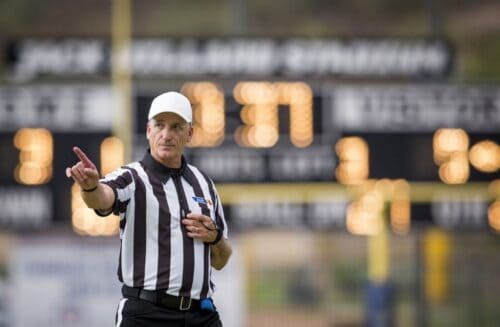Non-Verbal Communication Can Be Key
Non-verbal communication is vitally important – but often overlooked or ignored, particularly if we are not part of the target audience.
For example, we see American Sign Language translators at public events and news conferences. But, if you are not hearing impaired, it likely doesn’t mean much to you. We became very aware of this when we were working with long-time client, the Arizona Commission for the Deaf and the Hard of Hearing.
Similarly, during sporting events, non-verbal communication is vital. It’s somewhat regimented, which enhances its effectiveness.
With the high school football season wrapping up, I will put my public, non-verbal communication expertise on the shelf for a few months.
Being the referee for a football game at any level requires regular communication with the clock operator, announcer and others in the press box, as well as those on the sidelines or in the stands who are far away. We use standard signals for everything from communicating a touchdown to a penalty to starting or stopping the clock. The signals are standard and defined.
Unfortunately, in most cases away from the field, reading and understanding non-verbal messaging is not always so easy – especially in today’s “Zoom Call World.” Picking up on what others are saying to you via their own non-verbal communication, whether it is during a new business presentation, a staff meeting or a casual conversation can be make-or-break when it comes to the receptiveness of the messaging. We should all try to pay attention to that.

